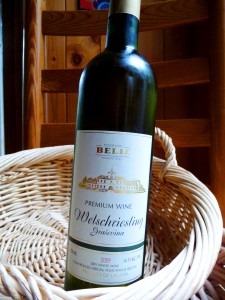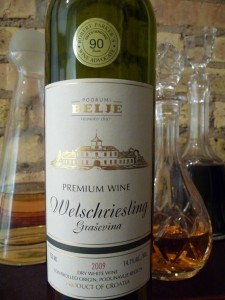Correction!
 I recently wrote a post about the 2009 Belje Welschriesling, and my description of the wine concerned the distributor. He thought the bottle I tasted must have been corked.
I recently wrote a post about the 2009 Belje Welschriesling, and my description of the wine concerned the distributor. He thought the bottle I tasted must have been corked.
He provided another bottle for me to taste, and I discovered that he was quite right: The first bottle had indeed been tainted. In retrospect, I should perhaps have realized that notes of “aged cheddar” were not meant to appear in the nose.
I so rarely encounter a corked bottle that it hadn’t even occured to me at the time. Cork taint, according to Wikipedia, occurs in only 1.5% to 7% of bottles, depending on whether you trust the cork industry or Wine Spectator. (The cork industry is at pains to point out that “cork taint” can also be caused by affected barrels.)
While I certainly didn’t dislike the first bottle of Belje Welschriesling, this uncorked second bottle tasted much better. (more…)






